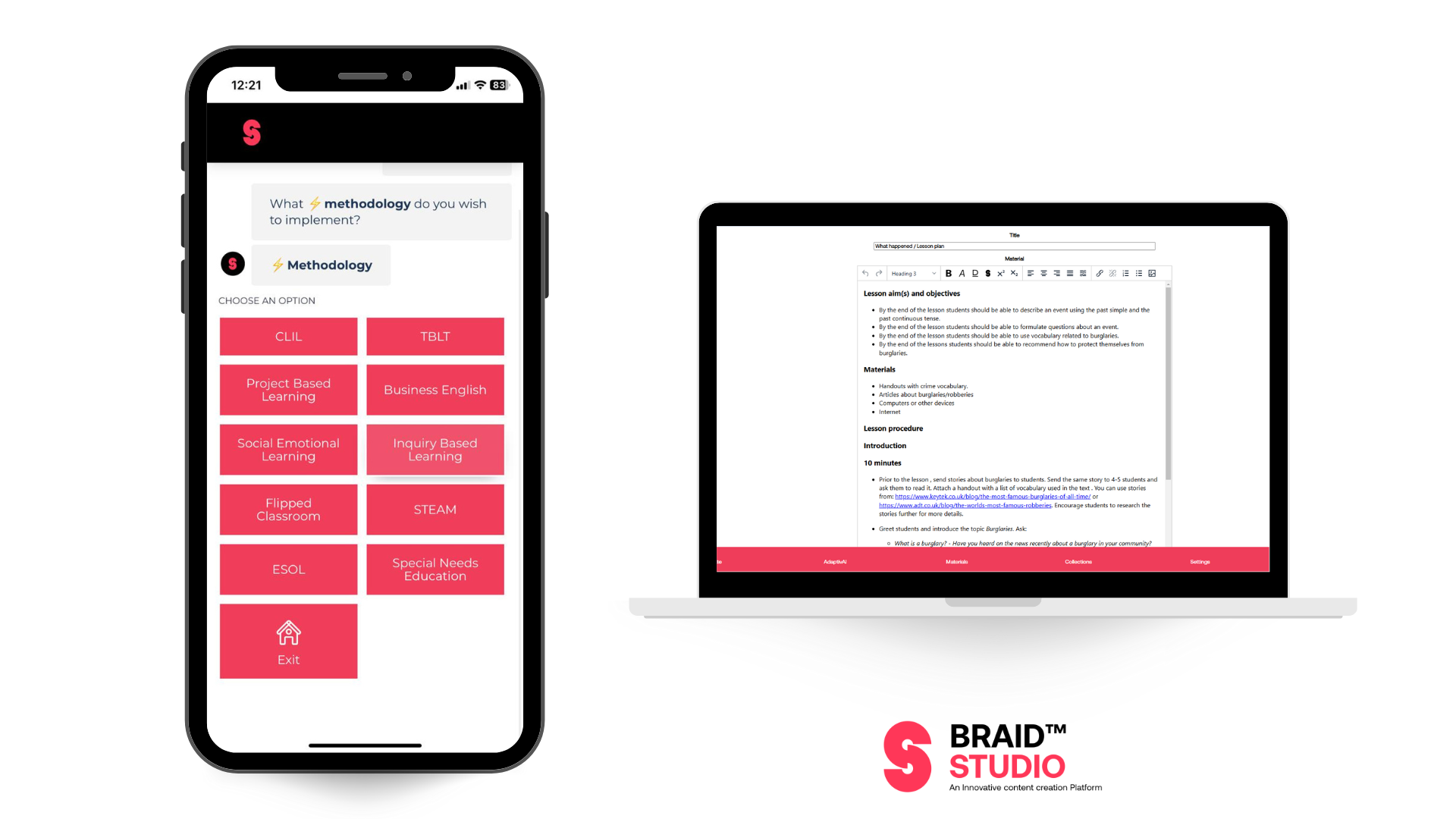From Vision to Reality
How we Built AdaptivAI OS with Teachers at the Core

Bringing AdaptivAI to life wasn't just about building an AI-powered platform for ELT; it was about building an operating system that teachers could truly embrace. From the very start, our focus was clear: create a system for English Language Teaching that integrates AI, not as a replacement, but as a genuine collaborator for teachers. This is the story of how we made that vision a reality—with educators leading the way.
Built for ELT by Putting Teachers First
AdaptivAI OS isn’t your typical AI tool repurposed for education. It is a comprehensive, AI-powered operating system crafted specifically for the needs of ELT. We knew that for our system to resonate with teachers, it had to be methodology-driven. That meant building custom prompts and creation tools aligned with key standards like the Common European Framework of Reference for Languages (CEFR). We made sure these tools were designed with the nuances of ELT in mind, enabling educators to create quality content that aligned with established pedagogical practices while still being able to infuse their unique touch into each lesson.
The teachers on our authoring team played a pivotal role here. Their insights helped us identify and solve the real challenges they face—turning the abstract capabilities of AI into tangible solutions that could make their lives easier, without compromising on the quality of learning. From developing prompts that sparked creativity to ensuring tools supported various ELT methodologies, their involvement ensured that every feature served a real educational purpose.
Custom Prompts and The Grid: Ensuring Methodology-Driven Content
One of the key innovations in AdaptivAI OS is the integration of custom prompts specifically crafted based on ELT methodology and the CEFR. These prompts are embedded into the system to ensure that educators are equipped with the right tools to create pedagogically sound content aligned with the learning goals CEFR sets. By providing teachers with these tailored prompts, we guarantee that the content they create is not only engaging but also meets the rigorous standards of language teaching.
This integration works hand-in-hand with “The Grid”—our proprietary technology for structuring content. The Grid provides a solid foundation for organizing and adapting content while maintaining pedagogical integrity. Together, the custom prompts and The Grid ensure that every piece of content created is methodology-driven and CEFR-aligned, enabling teachers to feel confident that what they've created is suitable for their classrooms. This combination of guided prompts and structured content architecture helps teachers focus on creativity while being assured of educational quality.
Simplicity and Creativity: Technology that Empowers Teachers
We emphasized simplicity because we understand that teachers' time is limited. Technology for educators needs to be easy to use, not a burden. Our goal was to create a tool that enables teachers to create content on the go—wherever inspiration strikes. That’s why we introduced a conversational interface, making it intuitive and accessible.

Technology should not limit creativity but enhance it. With AdaptivAI, we wanted teachers to feel that they could bring their ideas to life without the friction of complicated interfaces or overwhelming options. By focusing on simplicity, we ensured that the power of AI was always within reach, allowing teachers to spend more time on what matters most: teaching and inspiring their students.
Introducing “The Grid”: Our Proprietary Information Architecture
A core aspect of building AdaptivAI OS was creating “The Grid”—our proprietary technology for structuring content. In the vast landscape of language teaching, content isn’t just text and exercises; it’s an intricate web of skills, topics, cultural contexts, and learning goals. The Grid was designed to manage this complexity with elegance. It helps educators organize, connect, and adapt their content while providing a scaffold that maintains pedagogical integrity.
Whether teachers need to adapt material for different levels or introduce richer context that speaks to a diverse set of learners, The Grid ensures content remains flexible yet coherent. By giving educators powerful formatting options and tools to customize every aspect of their lessons, we ensured that rich content formatting wasn’t a luxury—it was a foundational feature. This kind of structuring doesn’t just save time; it empowers teachers to build and iterate with confidence.
Transparency, Scalability, and Teacher Ownership
Another critical decision in building AdaptivAI OS was to introduce a Bring Your Own Key (BYOK) model. In an industry often marked by opaque pricing and hidden fees, we wanted transparency to be a defining feature. The BYOK approach allows teachers and educational organizations to bring their own API keys, meaning they only pay for what they use—no hidden fees, no surprises. This decision was as much about respecting educators as it was about practical cost savings. We wanted AdaptivAI to be accessible, predictable, and honest.

AdaptivAI was also designed to scale across various educational contexts, from individual classrooms to entire institutions. We made it mobile-first to meet teachers where they are—on the go, juggling multiple tasks, needing flexibility at every turn. And by integrating deeply into Braid Studio, AdaptivAI empowers teachers to efficiently create, customize, and scale content, without losing the sense of ownership of their work. Teachers aren’t just using a tool; they’re creating with it, shaping it, and making it theirs.
The Human Element in Education
The human element in education—characterized by empathy, cultural integration, community building, and the transmission of values—remains indispensable. While AI can assist with content creation, personalization, and administrative efficiency, it cannot replace the uniquely human qualities that make education transformative. Human intelligence brings empathy, the ability to understand and connect with learners on an emotional level, and the skill to adapt content based on subtle cues that no algorithm can fully comprehend.
At Adaptiv, we believe that technology should enhance the role of teachers, not diminish it. By providing tools that streamline creative content development, we allow educators to focus on what they do best—nurturing, inspiring, and guiding their students. The power of AI combined with human intelligence creates a balanced, effective approach to education, where technology supports and amplifies the irreplaceable human connection at the heart of learning.
Transforming ELT Together
AdaptivAI OS is more than just software—it’s a co-creator, a partner, and a framework for reimagining what ELT can be. With teachers at the center of our development process, we’ve built a system that doesn’t just support language teaching; it transforms it. And this journey, from vision to reality, is just beginning.
Thank you for reading. I hope you found it valuable; if you did, please forward it to a friend.


